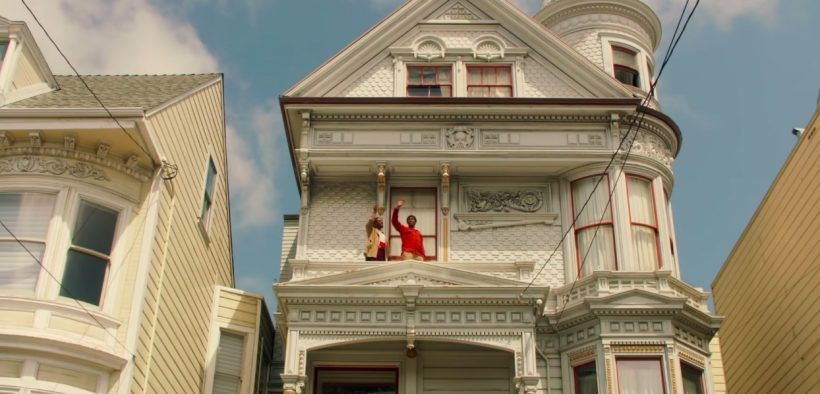‘The Last Black Man in San Francisco’ Explores the Ramifications of Gentrification

“It’s about coming together, the real San Franciscans who are still there,” said Fails. “Creating one voice to represent everyone. You can fight back with art.”
The Last Black Man in San Francisco drew rave reviews and awards at the Sundance Film Festival earlier this year, exploring themes of gentrification, race, and class in one of America’s premier cities.
Produced by Brad Pitt’s Plan B Entertainment (12 Years a Slave, Selma, Vice) and distributed by independent film studio A24 Films (Spring Breakers, Lady Bird), the film is actually the work of two young native San Franciscans—lifelong best friends at that: director Joe Talbot and star/partner/friend Jimmie Fails.
With its wide release to theaters this month, the film has continued to draw more praise for its compelling storytelling and timely themes.
The movie is heavily based on the experiences of Fails, who is African-American, and how his former house in San Francisco was affected by the continual ‘urban development’ of the city.
Fails stars as a fictionalized version of himself with the same name—along with Jonathan Majors, as two young black men living in the city. The movie centers on Jimmie’s quest to reclaim his childhood home, which is a Victorian house built by his grandfather in the Fillmore District—now owned by white owners who lack appreciation for it.
Themes of race, class, and culture inevitably arise—such as the glaring proximity of undesirable factors, like chemical dump sites, to black neighborhoods.
It’s no secret that San Francisco has become one of the most expensive cities in the country, and this film will undoubtedly shed light on the ramifications of that fact.
“People think of themselves as gentrifiers and don’t get involved because they’re scared of confrontation, they have some sort of guilt that goes along with that,” director Talbot said about the resistance of gentrifiers to engage with locals.
With a lifelong interest in the arts, Talbot and Fails are still new to the film world—even relying on fundraising site Kickstarter to finance their new movie initially—before getting traction at the Sundance Screenwriter’s Lab and eventually the sights of some of Hollywood’s most prestigious studios.
The filmmakers felt it was important to recruit as many native San Franciscans to work on the film as well, adding to its authenticity and showcasing the quality of talent living there. They managed to do that with acclaimed star Danny Glover, who happens to be a city native.
“The hills attract a lot of people—black, Asian, Latino—[that’s] where the melting-pot thing feels strongest,” Fails remarked.
Talbot and Fails emphasized that the movie is also a love letter to their native home, but clearly, they want it to spur a dialogue for respecting the cultural integrity and legacy of their city—or any other city.
“It’s about coming together, the real San Franciscans who are still there,” said Fails. “Creating one voice to represent everyone. You can fight back with art.”
The Last Black Man in San Francisco is in theaters now.















